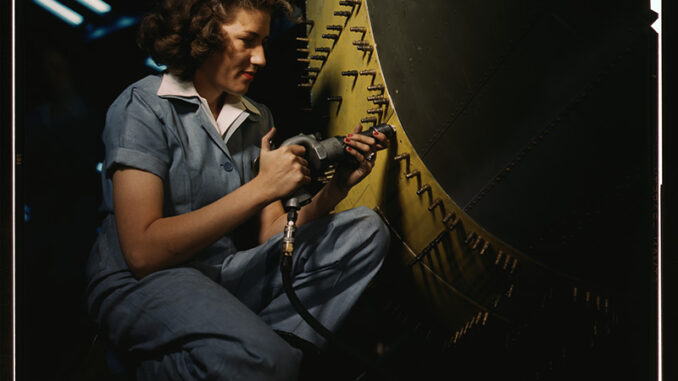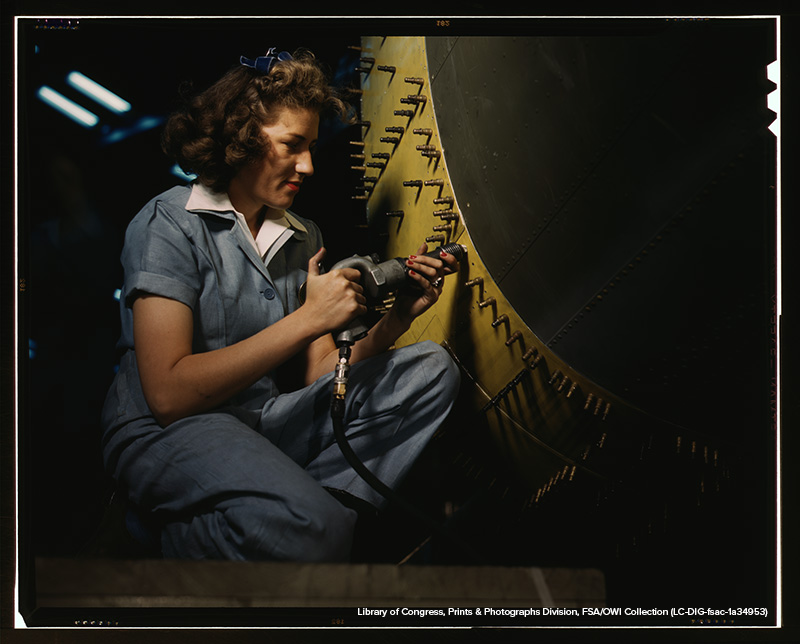
In the last few decades, the image of Rosie the Riveter has again become popular. You’ve likely seen “Rosie” on everything from T-shirts to buttons, flexing her bicep, wearing her iconic blue work shirt and red kerchief in her hair. But did you know that this image–which was originally created to celebrate women’s role in the workforce during World War II–was actually based on a real person? Here, btw takes a closer look at the life and death of this real-life feminist icon.

“We Can Do It!”
The poster we’ve all come to call “Rosie the Riveter” was developed in 1942 by a Pittsburgh artist named J. Howard Miller. Miller created a whole series of posters to celebrate the war effort, and while many people today think that the goal of the image was to encourage women to enter the workforce, that wasn’t the case: it was meant to celebrate and motivate the war effort for workers of both genders. At the time, the name “Rosie” wasn’t associated with the image; it was actually called “We Can Do It!”. The association with “Rosie the Riveter” actually came from a popular song of the same name, written in 1942 by Redd Evans and John Jacob Loeb.
So Who Was She?
The real-life inspiration for the “Rosie the Riveter” song was Rosalind P. Walter, who came from a wealthy family in New York City. She was born in June of 1924 in Brooklyn and was called Roz, not Rosie. Later, she went on to attend a college preparatory boarding school for wealthy women. But when World War II broke out, she took a night job as a riveter, which was a traditionally male job. ( A riveter drives metal pins, or rivets, into two or more plates to hold them together.) A newspaper wrote a story about Rosalind, which inspired the song that later inspired the iconic image of “Rosie the Riveter.” While Walter can’t claim to be the only Rosie–at least four other women modeled for different versions of the character over time–she was the first.
Life After “Rosie”
Becoming a cultural icon wasn’t Rosalind Walter’s only achievement. Later in life, she was a philanthropist, becoming a major donor to places such as PBS, and was the principal benefactor of public television in New York state. Interestingly, it was her work during World War II that led to her later desire to support public television.
Taking a job as a riveter meant giving up her opportunity to go to college, and Walter believed that public television helped provide her with the education which she otherwise would have missed out on. She and her husband also donated large sums of money to the American Museum of Natural History, Long Island University, the North Shore Wildlife Sanctuary on Long Island, the Pierpont Morgan Library, and other places.
Sadly, Ms. Walter died earlier this month in her home in Manhattan at the age of 95.
What Do You Think? After World War II ended, the percentage of women in the workforce fell from 36 percent to 28 percent. Why do you think that happened
